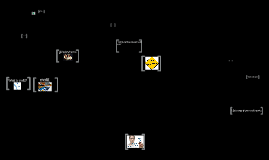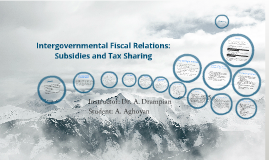Budgeting
Transcript: Block grants are usually distributed to general-purpose governments Aid is authorized for a wide range of activities within a broadly defined functional area Federal block grants support programs that include health, community development, crime control and mass transportation Block grants should not be expected to stimulate new recipient-government initiatives and should be given to the activities for which a broad consensus already exists The important fact in identifying the level of government that should provide a public service, is the range of benefit spillover. The structure of government satisfies Correspondence principle making the spillover area and the decision unit coincide and the failure can bring to misallocation of resources, poorly structured revenue systems and etc. Subsidiarity principle governmental responsibility for a function should be at the lowest level government, because sub-national governments are closer to the preferences and needs of taxpayers. Draft for Changes in “Law on Financial equalization" Grants transfer spending power from one government to another Grants can reduce the problems created by fiscal disparity, encourage programs of special national merit They can use stronger revenue administration capacity of the higher level to raise money for the lower level Federal grant system has included 3 types of assistance: Categorical grants Block grants General revenue sharing Why are Intergovernmental Fiscal Relations important ? Categorical grants finance specific and narrowly defined programs Categorical grants may be: Formula Project Project/Formula There are 3 main difficulties connected with the categorical grants: 1.Administrative complexity 2.Program overlap and duplication 3.Distortion of local priorities Block Grants How does this work in Armenia? Categorical Grants Correspondence and Subsidiarity Government can make the revenue structure more flexible in order to provide mutually beneficial financial assistance The two general classes of revenue relationship are: 1. Relief in tax-base use and 2. assistance with revenue administration and compliance Revenue relief includes deductions and credits Deductibility reduces the tax base for one governmental unit by the amount of tax paid to a supported government. Tax credit is an arrangement in which the tax levied by one government unit acts as payment of the liability owed to another government. Instructor: Dr. A. Drampian Student: A. Aghoyan Third variety of federal grants is revenue sharing Programs of revenue or tax sharing can strengthen local spending power It can reduce intergovernmental fiscal disparities It also can strengthen the expenditure capability to government units with constrained taxing powers Tax sharing programs are a common feature in the finances of many other countries including countries from former Soviet Union Intergovernmental fiscal relations Correspondence and Subsidiarity Fiscal Disparity as a complication Grants (Subsidies) Tax sharing How does it work in Armenia? Grants in Armenia Intergovernmental Grants (Subsidies) The problem is the following: there is a inequity in equalization grant providing within the municipalities having less/more than 300 people Municipalities that have more than 300 people receive less amount of money, than those having less than 300 people Expected result will be to receive equal amount of money from equalization grant's funding According to Armenian legislation subsidies (grants) are defined as intergovernmental transfers to local government's budget Equalization grants 4.4% Capital transfers (subventions) 0.11% Law of Budgetary system, Clause 4, Article 20 states, State budget expenditure can also include following allocations: Other subsidies to support broad goals (block grants) Subventions to support specific expenditure (categorical grants) Intergovernmental Fiscal Relations: Subsidies and Tax Sharing Tax Sharing in Armenia Fiscal autonomy of local governments is entrenched in the RA Constitution Municipal revenues for municipal needs Legislation provides for 4 types of intergovernmental transfers to operating budget: State subsidies Other subsidies Subventions or targeted grants Funding for delegated functions Capital budget has its distinct sources of revenues Official transfers 1. State subventions 2. Other transfers THANK YOU!!! The Law of Local Self-Government also stipulates revenue sharing It provides undefined share of tax, profit tax and environmental fees for municipal budget The exact percentage of the share is supposed to be allocated by NA No shares of income and profit tax had been appropriated to the municipalities John L. Mikesell, FISCAL ADMINISTRATION: ANALYSIS AND APPLICATION FOR THE PUBLIC SECTOR, 6th ed. Thomson, Wadsworth, 2003. David Tumanyan, Intergovernmental Fiscal Relations in Armenia, 2002. http://unpan1.un.org/intradoc/groups/public/documents/NISPAcee/UNPAN004549.pdf National Assemble, Draft for doing changes in “Law on

















